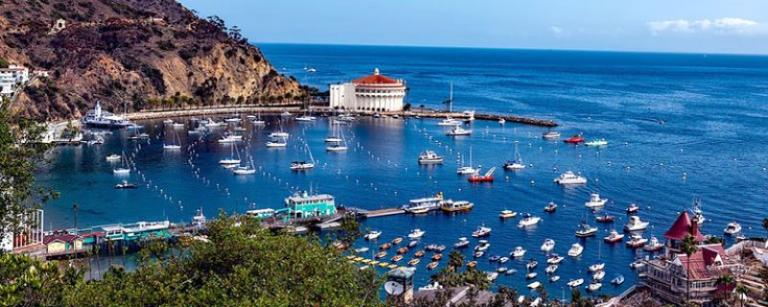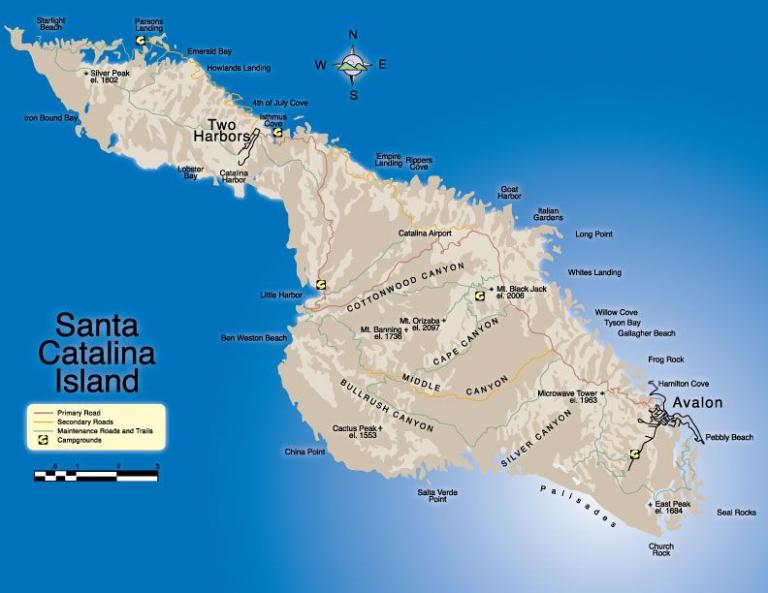
We spent the bulk of the day today sailing to and from Santa Catalina Island and on the island itself. I began coming to Catalina when I was a little boy — I honestly can’t remember my first time over on the old “Great White Steamship” (now long since retired) — but, prior to today, I hadn’t been back for at least a couple of decades. So it was fun to see familiar sights again.

We had rented a little cart in advance, so we and friends took the scenic drive around the end of the island where its principal (only?) town, Avalon, is located. We interrupted our driving to visit the 38-acre Wrigley Memorial & Botanic Garden, which emphasizes island plants that are uniquely endemic to the Channel Islands, off the coast of California. We were impressed by the variety of cactus species that we saw, some of which are quite unusual.

After a couple of hours of putt-putting around in our little cart in the area above Avalon, and following a bit of lunch, we boarded a semi-submersible boat for some fish-observing. We saw mostly opaleyes (“opal-eyes”), Garibaldi damselfish, kelp bass or calico bass, and what I guess to have been several kinds of smelt.
Curiously, it seems that the Santa Catalina Island land-mass was never directly connected, geologically speaking, to mainland California. It surprised me a bit to learn that. The two distinct rock units of which it is composed — Catalina schist dating to the Early Cretaceous Period (that is, to 95 to 109 million years ago), and much more recent Miocene volcanic and intrusive igneous rocks (dating to somewhere between 23 and 5 million years before the present) — originally occurred on the ocean floor and emerged from the ocean through tectonic activity.
The Channel Islands as a group (including those in the Santa Barbara Channel, to the north of Santa Catalina and its two neighbors, San Clemente and San Nicolas) were all heavily influenced if not altogether formed by volcanic activity approximately 14 million years ago, and they moved to their present location and took their current form by reason of plate tectonics. Rising and lowering sea levels have also, obviously, had their effect. Although it was believed for a long time that the four northern Channel Islands — East, Middle, and West Anacapa (which are treated as a unit), Santa Cruz, Santa Rosa, and San Miguel — were likely once connected to the mainland, that idea is now commonly rejected.
Posted from Newport Beach, California











